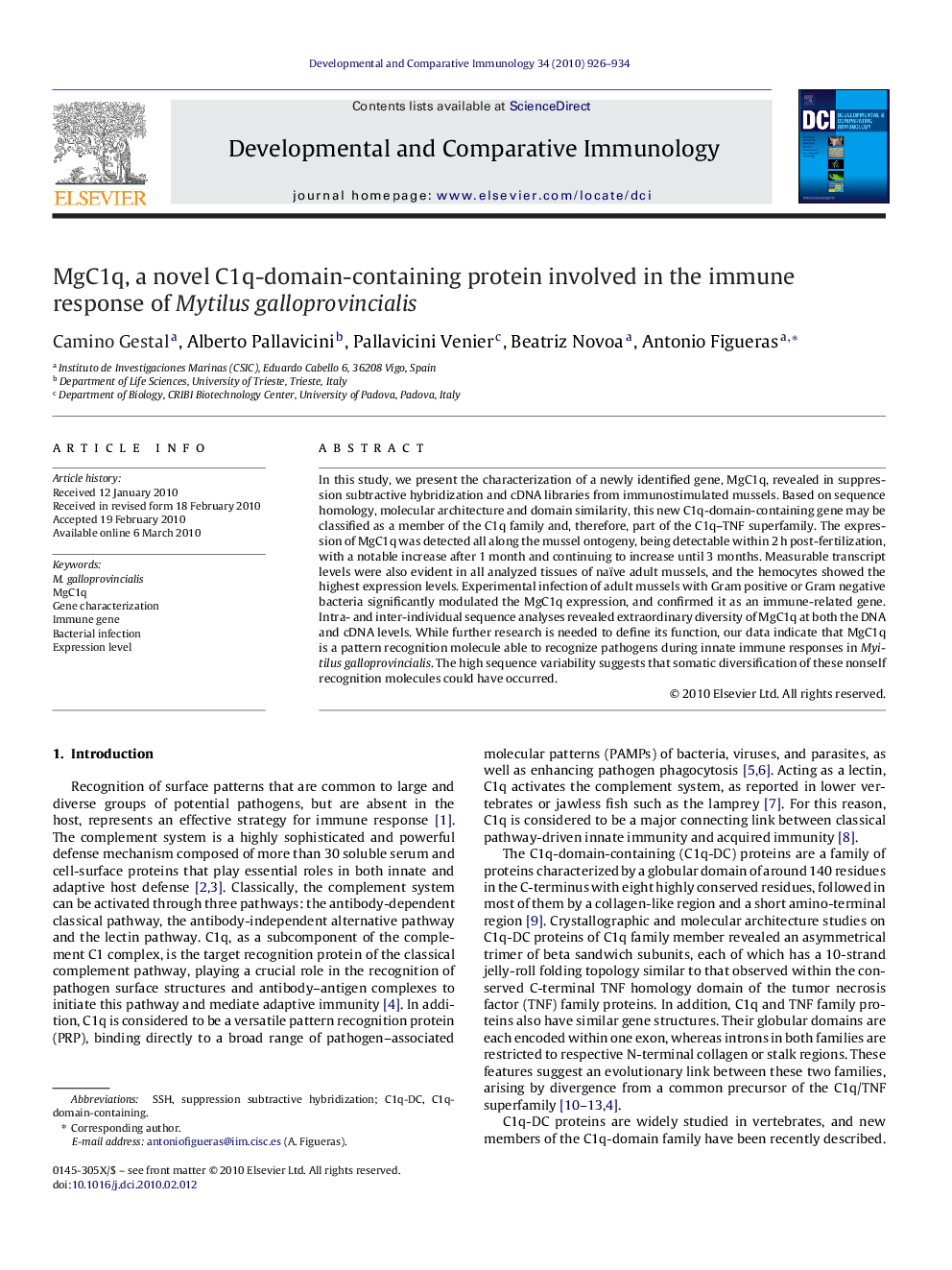| Article ID | Journal | Published Year | Pages | File Type |
|---|---|---|---|---|
| 2429630 | Developmental & Comparative Immunology | 2010 | 9 Pages |
In this study, we present the characterization of a newly identified gene, MgC1q, revealed in suppression subtractive hybridization and cDNA libraries from immunostimulated mussels. Based on sequence homology, molecular architecture and domain similarity, this new C1q-domain-containing gene may be classified as a member of the C1q family and, therefore, part of the C1q–TNF superfamily. The expression of MgC1q was detected all along the mussel ontogeny, being detectable within 2 h post-fertilization, with a notable increase after 1 month and continuing to increase until 3 months. Measurable transcript levels were also evident in all analyzed tissues of naïve adult mussels, and the hemocytes showed the highest expression levels. Experimental infection of adult mussels with Gram positive or Gram negative bacteria significantly modulated the MgC1q expression, and confirmed it as an immune-related gene. Intra- and inter-individual sequence analyses revealed extraordinary diversity of MgC1q at both the DNA and cDNA levels. While further research is needed to define its function, our data indicate that MgC1q is a pattern recognition molecule able to recognize pathogens during innate immune responses in Myitilus galloprovincialis. The high sequence variability suggests that somatic diversification of these nonself recognition molecules could have occurred.
